Food labels can be tricky, and marketing doesn’t always tell the whole truth. Many products sold as “healthy” are actually ultra-processed, filled with added sugars, preservatives, and artificial ingredients that do more harm than good.
These so-called smart choices might be sabotaging your health without you even realizing it. On the flip side, some foods get a bad rap just because they’re canned, frozen, or packaged—but many of them are actually nutrient-dense and minimally processed.
In this list, we’re uncovering 9 foods that aren’t as healthy as they seem, plus 8 surprisingly wholesome picks that deserve a second chance in your kitchen. Let’s clear up the confusion and help you make smarter choices at the store.
1. Flavored Yogurt: Sugar in Disguise
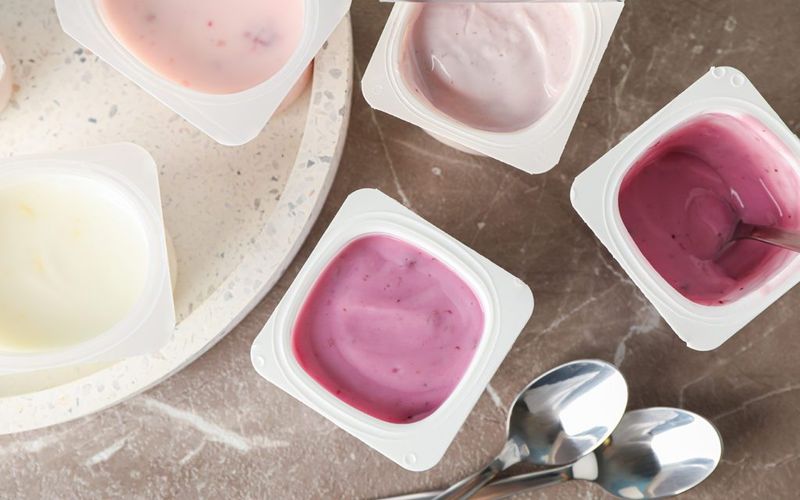
Those colorful yogurt cups might seem like a nutritious snack, but they’re often packed with more sugar than ice cream! A single serving can contain up to 7 teaspoons of added sugar, nearly your entire daily limit.
Food companies add artificial flavors, colors, and thickeners to make these products more appealing. The fruit pictured on the label? It’s usually minimal at best, replaced by flavored syrups.
For a healthier alternative, buy plain yogurt and add fresh fruit, honey, or maple syrup yourself. This simple swap gives you control over sweetness while avoiding unnecessary additives.
2. Granola Bars: Candy Bars in Disguise

Marketing wizards have convinced us that granola bars are healthy snacks, but read that ingredient list carefully! Most commercial varieties contain corn syrup, sugar, chocolate chips, and hydrogenated oils—basically the same ingredients as candy bars.
The “whole grains” advertised are often minimal compared to the sweeteners and binding agents. Some popular brands pack 12+ grams of sugar in a tiny bar.
Want a truly healthy option? Make your own bars with oats, nuts, seeds, and a touch of honey. Or choose brands with fewer than 5 ingredients, all of which you can pronounce and recognize as actual food.
3. Veggie Chips: Vegetables in Name Only
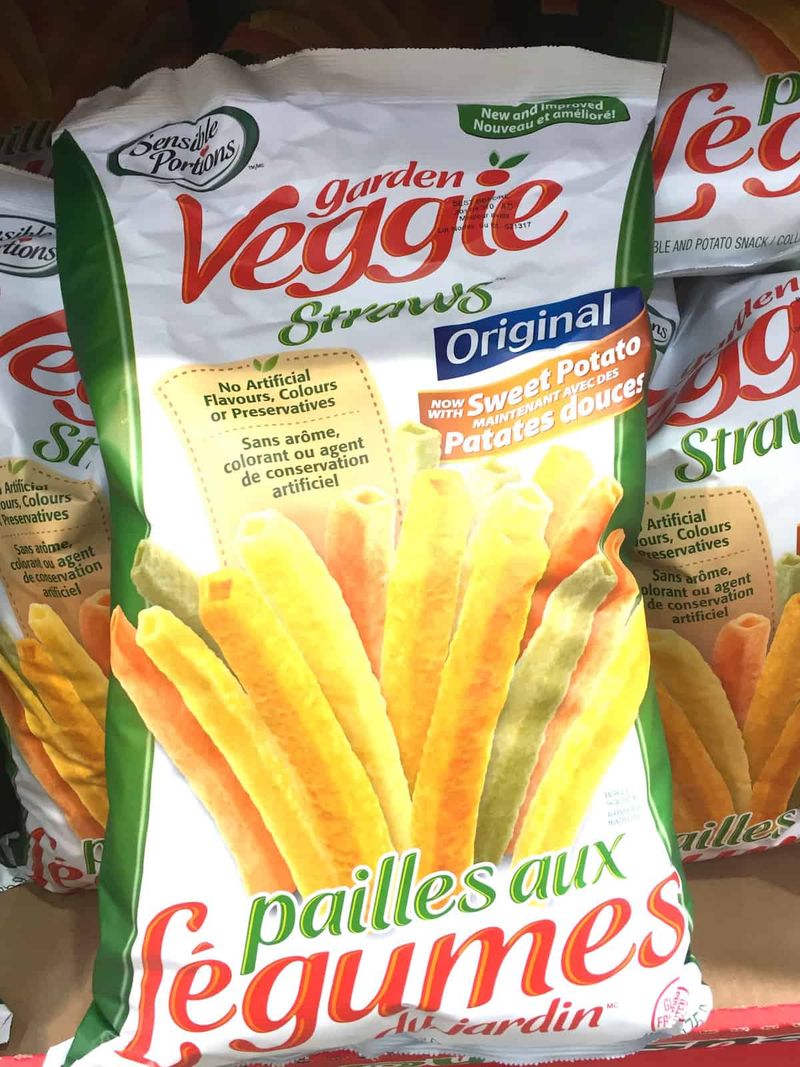
The pretty pictures of vegetables on those veggie chip bags are mostly marketing fiction. Despite their healthy-sounding name, most veggie chips contain minimal actual vegetables—usually in powder form—mixed with potato starch, oil, and salt.
Nutritionally, they’re nearly identical to regular potato chips, just with added food coloring to create the illusion of vegetable content. The manufacturing process strips away most nutrients found in real vegetables.
Craving a crunchy snack? Try making your own veggie chips by thinly slicing actual vegetables like beets, sweet potatoes, or kale and baking them with a light coating of olive oil.
4. Breakfast Cereals: Morning Sugar Bombs
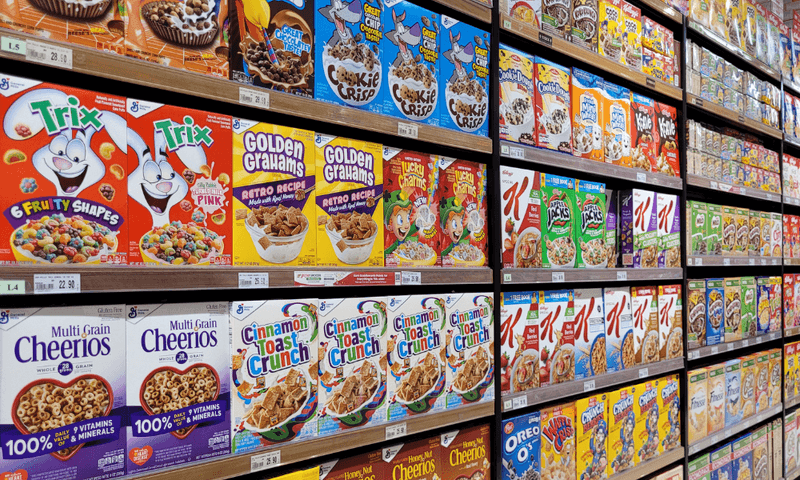
Those cereal boxes shouting “whole grain” or “fortified with vitamins” are masters of distraction. The reality? Many breakfast cereals—even those marketed as healthy—contain more sugar per serving than a chocolate chip cookie!
Manufacturing processes strip away the grain’s natural nutrients, then companies spray synthetic vitamins back on. This is why they can claim to be “fortified” despite being nutritionally poor.
Healthier breakfast alternatives include oatmeal topped with fruit, Greek yogurt with nuts, or whole grain toast with avocado. If you must have cereal, look for varieties with less than 5g of sugar and at least 3g of fiber per serving.
5. Plant-Based Meat Alternatives: Chemical Concoctions
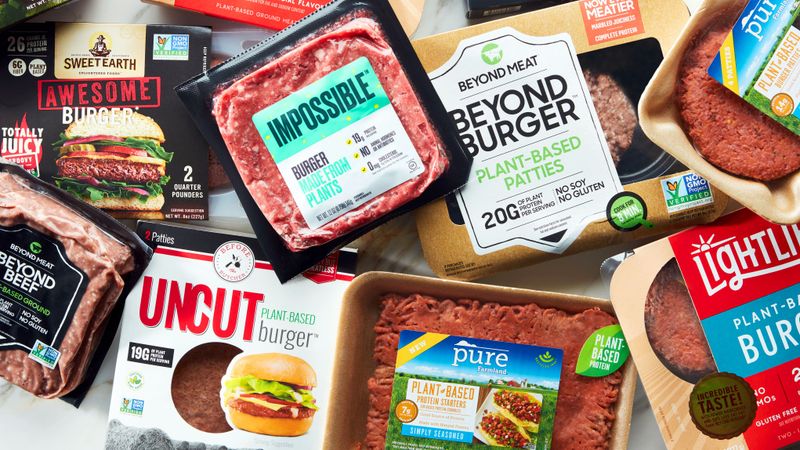
Plant-based burgers and nuggets might seem like healthy alternatives to meat, but check that ingredient list! Many contain upwards of 20 highly processed ingredients including isolated proteins, refined oils, methylcellulose, and artificial flavors.
These products often undergo extensive processing to mimic meat’s texture and flavor. While they may help reduce meat consumption, they’re far from whole foods.
For truly healthy plant-based protein, choose minimally processed options like tempeh, lentils, or bean-based burgers with recognizable ingredients. These provide protein along with fiber and nutrients without the long list of additives and extracts found in ultra-processed alternatives.
6. Fruit Snacks and Leathers: Candy Masquerading as Fruit
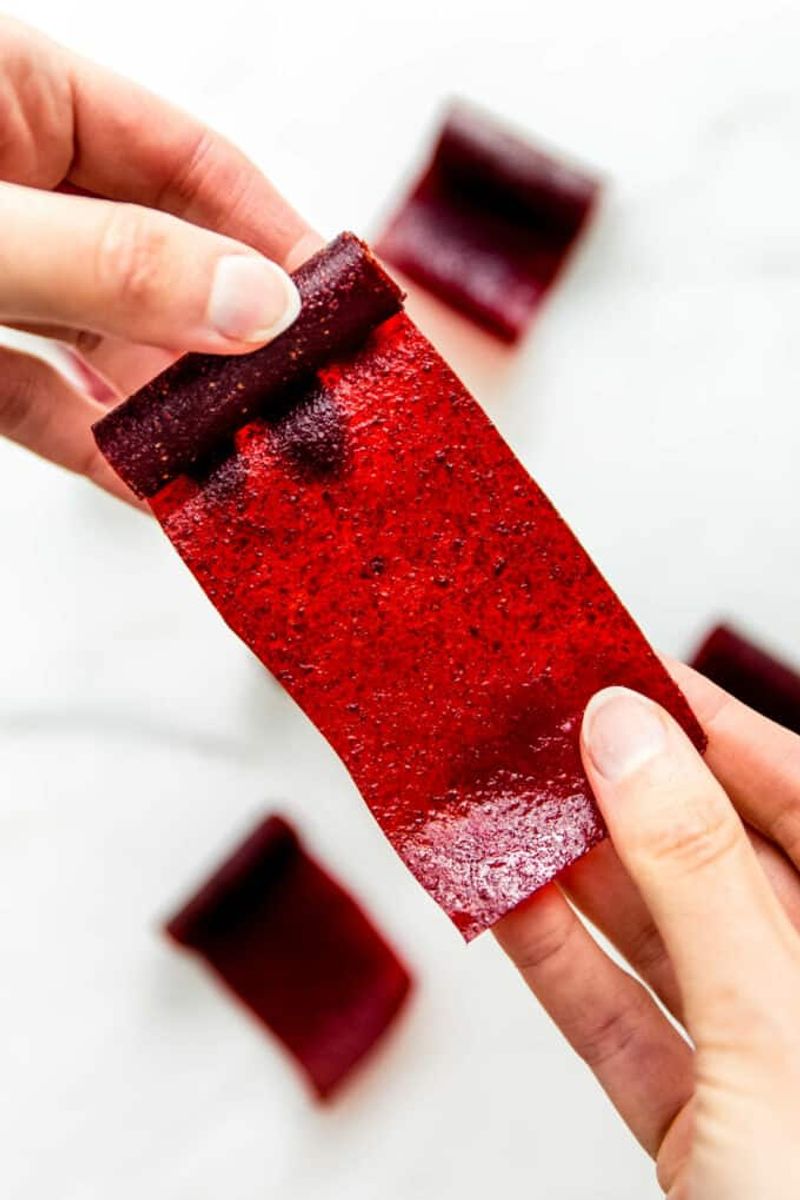
Those gummy fruit snacks claiming to be “made with real fruit” typically contain minimal actual fruit. Instead, they’re primarily corn syrup, sugar, and food coloring shaped into fun characters to appeal to kids.
The manufacturing process removes fiber and most nutrients found in whole fruit. What remains is essentially concentrated sugar with fruit flavoring and perhaps a small amount of fruit juice concentrate.
Looking for convenient fruit options? Try fresh berries, apple slices, or freeze-dried fruit with no added sugar. These provide natural sweetness along with fiber, vitamins, and minerals that fruit snacks simply don’t deliver.
7. Protein Powders and Shakes: Science Experiments in a Bottle
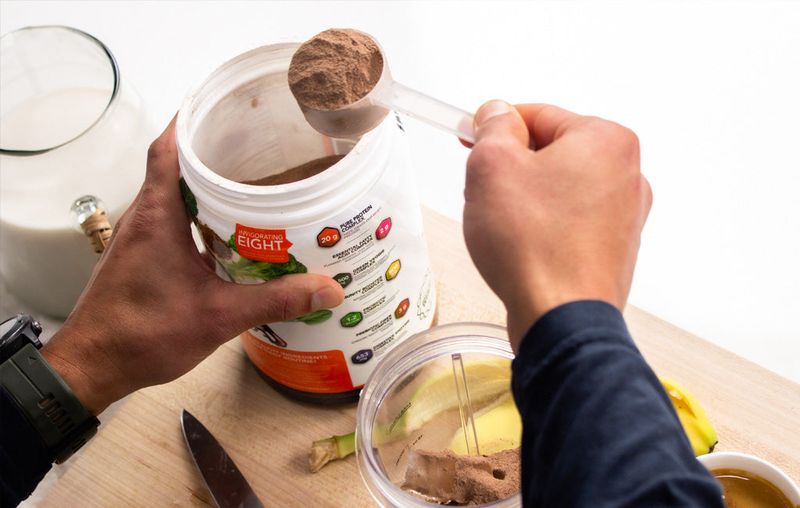
Marketed as fitness essentials, many protein supplements contain artificial sweeteners, flavors, colors, and thickeners that your body doesn’t need. Some popular brands pack in more than 20 ingredients, many of which are chemicals you can’t pronounce.
Heavy metals like lead, arsenic, and cadmium have been found in certain protein products due to sourcing issues. And those muscle-bound models on the packaging? They definitely didn’t build their physiques from powder alone.
If you need extra protein, consider whole food sources first: eggs, Greek yogurt, chicken, or beans. When choosing supplements, look for minimal ingredients—ideally just protein isolate with perhaps natural flavoring.
8. Flavored Instant Oatmeal: Breakfast Sugar Packets
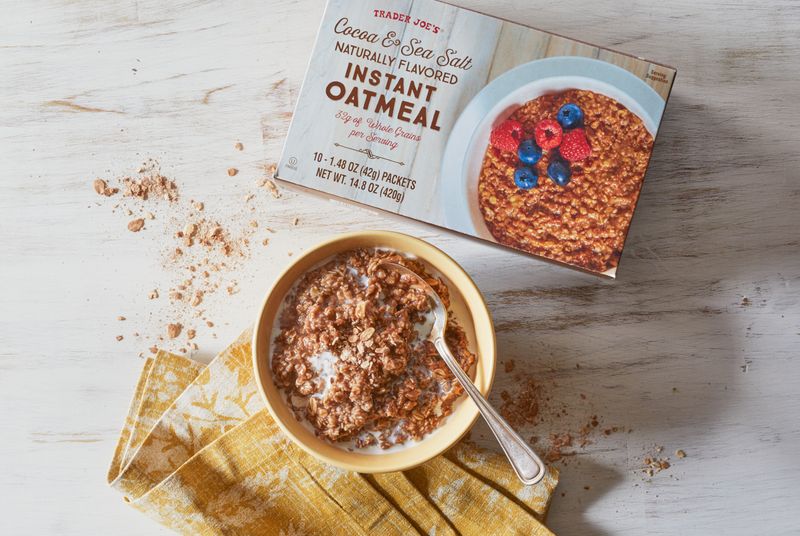
Those convenient instant oatmeal packets seem like a healthy breakfast choice, but the flavored varieties hide a sugary secret. A single “maple and brown sugar” packet can contain up to 12 grams of added sugar—that’s 3 teaspoons in your breakfast bowl!
Beyond sugar, these products often contain artificial flavors, colors, and preservatives to create those “maple” or “apple cinnamon” tastes. The oats themselves are highly processed for quick cooking, reducing their nutritional value.
For a better breakfast, buy plain rolled or steel-cut oats and add your own toppings. Fresh fruit, cinnamon, and a drizzle of real maple syrup provide natural sweetness without the processed sugar overload.
9. Bottled Smoothies: Liquid Sugar Bombs
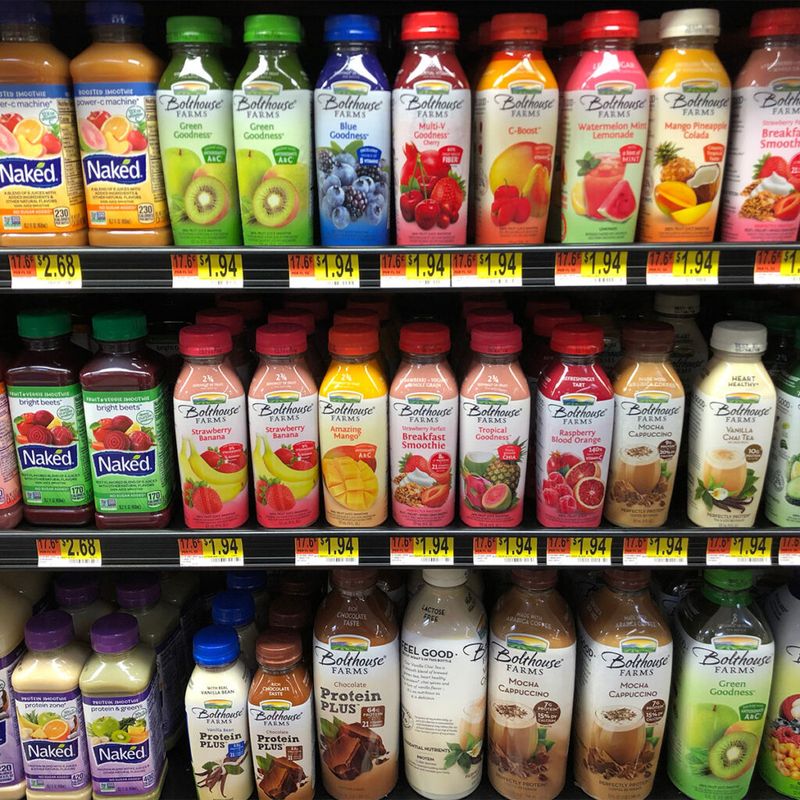
Those colorful bottled smoothies at the grocery store promise fruit-powered nutrition, but they’re often closer to dessert than health food. A single bottle can pack more sugar than a can of soda—sometimes 50+ grams!
The pasteurization process destroys many of the vitamins naturally present in fruits and vegetables. Companies then add back synthetic vitamins to compensate, along with preservatives to extend shelf life.
Make smoothies at home instead! Blend fresh or frozen fruits with plain yogurt or milk and add greens like spinach for extra nutrition. You’ll get fiber, natural vitamins, and control over sweetness without all the added sugars and preservatives.
Now that we’ve uncovered the imposters, let’s look at the foods that may seem processed but are actually smart, nutritious choices.
1. Canned Beans: Surprising Nutritional Heroes

Canned beans get a bad rap, but they’re actually nutritional powerhouses! These convenient legumes retain most of their fiber, protein, and nutrients through the canning process, making them a quick and healthy addition to meals.
Many people worry about sodium, but simply rinsing canned beans reduces sodium content by up to 40%. Low-sodium and no-salt-added varieties are widely available too.
Studies show bean eaters have lower rates of heart disease and better weight management. Keep canned chickpeas, black beans, and kidney beans in your pantry for quick meals—add them to salads, soups, or tacos for an instant nutrition boost without extensive prep time.
2. Frozen Vegetables: Flash-Frozen Nutrition
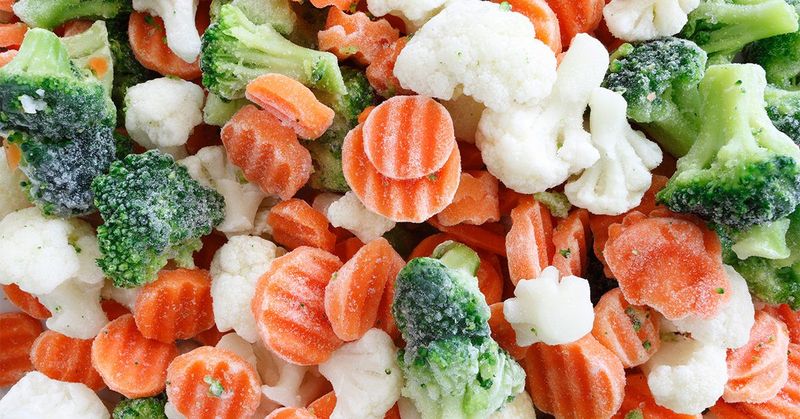
Frozen vegetables are harvested at peak ripeness and flash-frozen within hours, locking in nutrients that fresh produce might lose during transport and storage. Research shows frozen veggies can have equal or even higher vitamin content than their fresh counterparts that have spent days in transit.
The convenience factor makes healthy eating more accessible. No washing, peeling, or chopping required—just heat and eat!
Stock your freezer with plain frozen vegetables (avoid those with added sauces or seasonings). They’re perfect for quick stir-fries, soups, and side dishes when you’re short on time but still want nutritious meals.
3. Plain Greek Yogurt: Protein Powerhouse
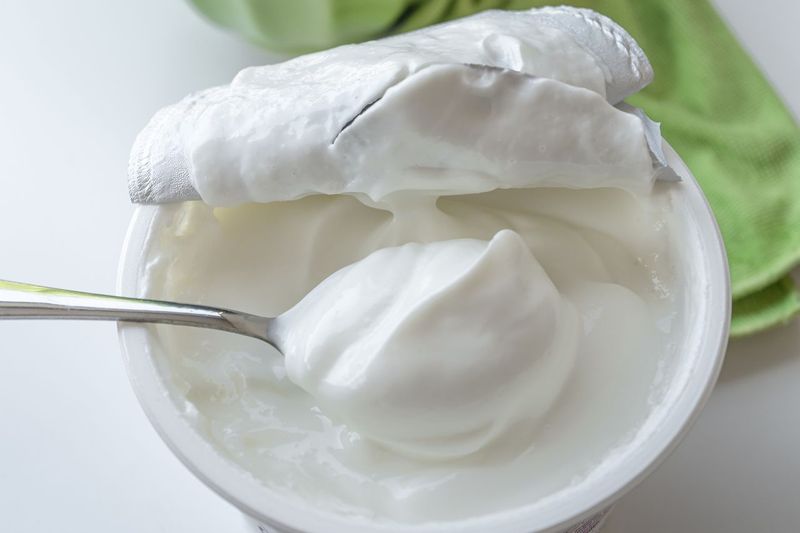
Plain Greek yogurt might seem boring compared to its flavored cousins, but it’s a nutritional superstar! The straining process creates a protein-rich food (17-20 grams per cup) with less sugar and more calcium than regular yogurt.
The live cultures in Greek yogurt support gut health and improve digestion. Research suggests these probiotics may boost immunity and reduce inflammation throughout the body.
Use Greek yogurt as a versatile kitchen staple—as a sour cream substitute, the base for dressings and dips, or a protein-packed breakfast topped with fruit and honey. Choose full-fat or 2% varieties for better nutrient absorption and greater satisfaction.
4. Whole Grain Bread: Not All Carbs Are Villains
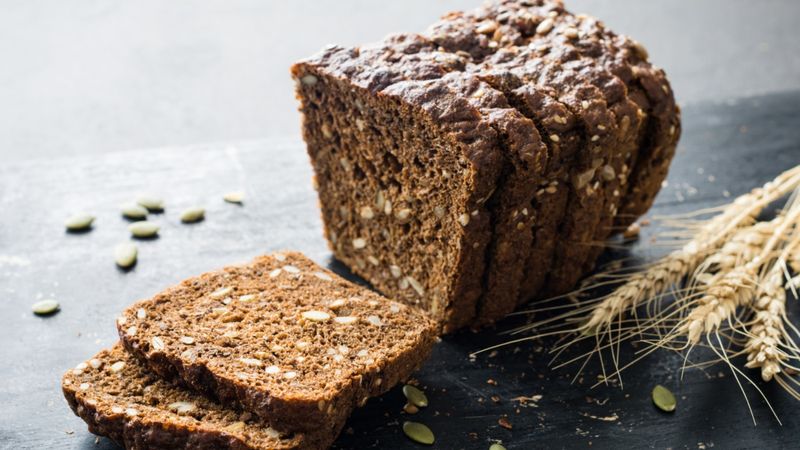
Real whole grain bread has been unfairly lumped in with its refined white counterparts. Authentic whole grain varieties contain the entire grain kernel—bran, germ, and endosperm—providing fiber, protein, B vitamins, antioxidants, and healthy fats.
The key is reading ingredients carefully. Look for “100% whole grain” as the first ingredient and a short list of recognizable components. Avoid breads with added sugars, preservatives, or artificial ingredients.
Studies link whole grain consumption to reduced risk of heart disease, stroke, type 2 diabetes, and better weight management. Enjoy your toast, sandwiches, and avocado bread without guilt—just choose the right loaf!
5. Natural Nut Butters: Healthy Fat Champions
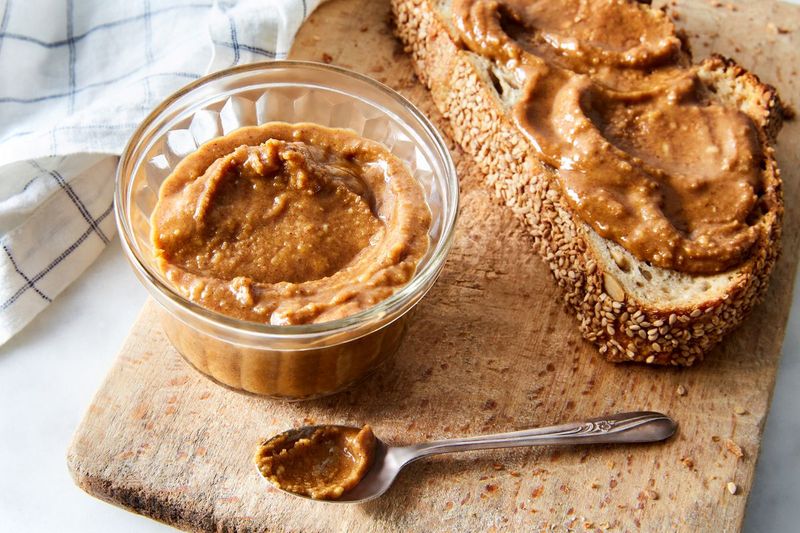
The only ingredient in natural nut butter should be nuts (and maybe a touch of salt). These simple spreads provide heart-healthy monounsaturated fats, protein, fiber, vitamins, and minerals without the hydrogenated oils and added sugars found in conventional versions.
That layer of oil on top? It’s a good sign! Natural separation indicates the absence of artificial stabilizers. Just stir it in before using.
Almond, peanut, and cashew butters make satisfying additions to toast, oatmeal, smoothies, or apple slices. Their combination of protein and healthy fats helps maintain steady blood sugar and keeps hunger at bay between meals.
6. Dark Chocolate: Antioxidant-Rich Treat

Not all chocolate deserves its junk food reputation! Dark chocolate with 70% or higher cocoa content contains powerful antioxidants called flavanols that can improve heart health and blood flow.
Studies show moderate dark chocolate consumption may reduce inflammation, lower blood pressure, and improve brain function. The key is choosing varieties with minimal added sugar and no milk solids.
Enjoy a small square (about 1 ounce) after dinner for a satisfying treat with health benefits. The rich flavor means you’ll likely be satisfied with less than you would need of milk chocolate, and the higher fat content helps slow sugar absorption.
7. Tofu: Plant Protein Chameleon
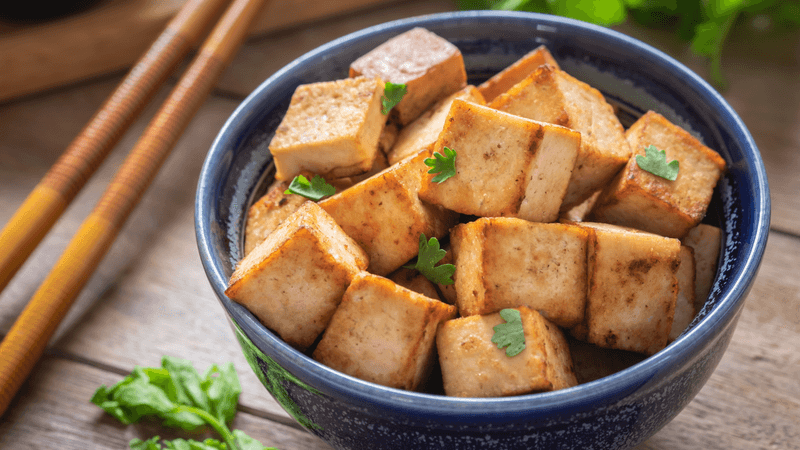
Tofu has been unfairly maligned despite being a nutritional powerhouse. This soybean-based protein contains all nine essential amino acids, making it a complete protein comparable to animal sources.
Research shows soy foods like tofu may help lower cholesterol, reduce heart disease risk, and ease menopausal symptoms. Contrary to popular myths, moderate soy consumption doesn’t disrupt hormones in men or women.
Tofu’s versatility makes it perfect for countless dishes. Firm varieties can be grilled or stir-fried, while silken tofu blends beautifully into smoothies and desserts. Marinate before cooking to infuse flavor into this adaptable protein that absorbs whatever seasonings you pair it with.
8. Whole Wheat Pasta: Fiber-Filled Comfort Food
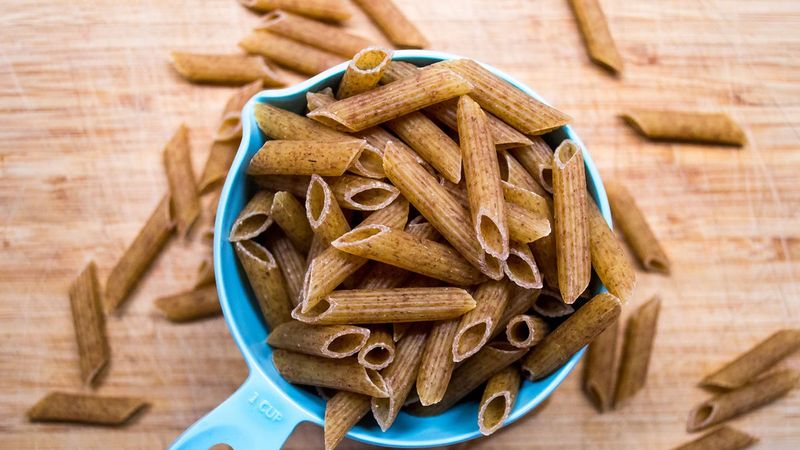
Whole wheat and legume-based pastas have transformed a former diet villain into a nutritious meal option. Unlike refined white pasta, whole grain varieties contain the entire wheat kernel, providing fiber, protein, B vitamins, and minerals.
The extra fiber (5-7g per serving versus 2g in white pasta) slows digestion, preventing blood sugar spikes and keeping you fuller longer. Newer legume-based options made from chickpeas or lentils offer even more protein and fiber.
Cook whole grain pasta al dente (slightly firm) for the best texture and lowest glycemic impact. Pair it with vegetables and healthy fats like olive oil for a balanced meal that satisfies without the post-pasta energy crash.
Leave a comment